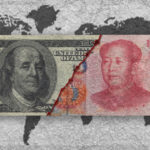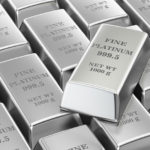China’s long term gold plans
(September 19, 2014 - by Lawrence Williams)
The launch of Shanghai Gold Exchange trading yuan denominated contracts in the China (Shanghai) Pilot Free Trade Zone Thursday, which has enabled foreign investors to invest in China’s physical gold bullion market, is yet another one of China’s overt moves to dominate the global gold sector long term. It may make a slow start but aims to become the world’s biggest physical gold exchange and is thus is in itself a move towards reducing the influence of COMEX and the LBMA on global gold trade and pricing and move the centre of gravity for this eastwards. Similar moves to set up new international gold contracts in Singapore and Hong Kong will further accelerate the move in gold trade to east Asia.
But it is China which is the real key. As the World Gold Council (WGC) stated in a recent report on the Chinese gold market “China’s gold market development is solid, on-going and for the long term. Even if there are occasional setbacks along the way, the country’s massive population, continued rapid economic growth and, critically, its deeply rooted pro-gold culture will ensure that the spotlight will continue to be on China for many years to come....Gold demand in China could not have flourished as it has without the blessing of the authorities. Extensive gold ownership by the people is viewed as increasing the nation’s overall wealth. It also helps to absorb cash in the economy and limit the inflationary impact of rapid growth in the money supply that in turn is linked to China’s large balance of payments surpluses.”
There is, as the WGC intimated in the same report, already considerable speculation out there that China is building its gold reserves without declaring them to the IMF – so these additional reserves do not appear in the global country-by-country gold reserve statistics that that august body issues on a regular basis. China, in its own logic, will see such hiding of its total gold holdings as legitimate in that the additional gold is buried in some non-reported government account and does not thus have to appear in its official gold reserve figures. This is the kind of solution perhaps only the Chinese, who seem to thrive on statistical opacity, can come up with – not that Western governments are not also adept at manipulating financial statistics to their own benefit.
Now if China is indeed building its gold reserves in this manner, the questions might be asked why, how long has this been happening, how much gold does China actually hold and when will it ultimately declare a new reserve figure, which it will inevitably do some day when it is seen as politically expedient to do so? Researcher Koos Jansen, who specialises in analysing Chinese data, takes a stab at these figures looking at import data, Chinese gold production and gold movements out of the Shanghai Gold Exchange (SGE). His findings suggest that China may have been hoarding gold in unreported accounts for some years and estimates that China’s government gold holdings were in reality around at least 3,500 tonnes in 2013 (and rising) as compared with the official figure as reported to the IMF of 1,054 tonnes.
If Jansen’s estimates are anywhere near correct, and we think they may be conservative, at the assumed rate of gold reserve expansion, we estimate that China ‘s official gold reserves could exceed those of the USA – the world’s largest official gold holder with 8,133.5 tonnes - by the end of the decade. Perhaps the Chinese are waiting until they are indeed the world’s No.1 gold holder to update their official reserve position – and given the huge flows of gold from West to East in the past three years this could happen quicker than anyone seems to currently foresee. Of course this assumes that the Chinese 1,054 tonne figure was itself an accurate picture 6 years ago. If China is building gold reserves through buying on global markets (which Jansen avers), but without wishing to rock the gold price boat while it converts some of its huge excess of dollar denominated securities into gold, it has every incentive to downplay its total holdings.
China, with its centrally managed economy which has arisen out of a pragmatic interpretation of Communist ideology, is adept at playing the long game. The West, with its largely capitalist society, is far more short term in its outlook and perhaps just doesn’t understand the Chinese mentality – to its own long term financial peril. While the Western investor has been turned off gold, the Chinese have been encouraged by the State to buy and thus build overall national gold accumulations. And this gives the State a certain responsibility to protect its citizens’ wealth and just not allow gold to drop much more. It is a fine balance between what it may see as its internal financial responsibilities to its citizenry and its capacity to enhance its government gold holdings at the lowest possible price.
As the WGC itself puts it (It has just announced co-operation agreements with the China Gold Association and the Shanghai Gold Exchange) ‘China is now at the centre of the global gold market – the engine driving the shift from West-to-East in terms of wealth creation, economic growth and gold production and consumption. The factors driving gold demand in China: a deep rooted pro-gold culture; an increasingly middle class population set to number 500 million by 2020; consistent economic growth and a supportive government, suggest that there is also significant room for further growth.’
So why is China so keen on gold? Historically gold holdings have been the primary indicator of a country’s financial position in the world. It is notable that the U.S has by far the world’s biggest official gold reserve and dominates world trade. If China is to usurp this position, which we believe to be its long term aim, it feels the need to build its gold reserves to cement its place in the global financial hierarchy. Even though economists may disparage gold as irrelevant it is notable that the central banks of most of the world’s biggest economies hold substantial reserves of the yellow metal and show no inclination to dispose of them.






